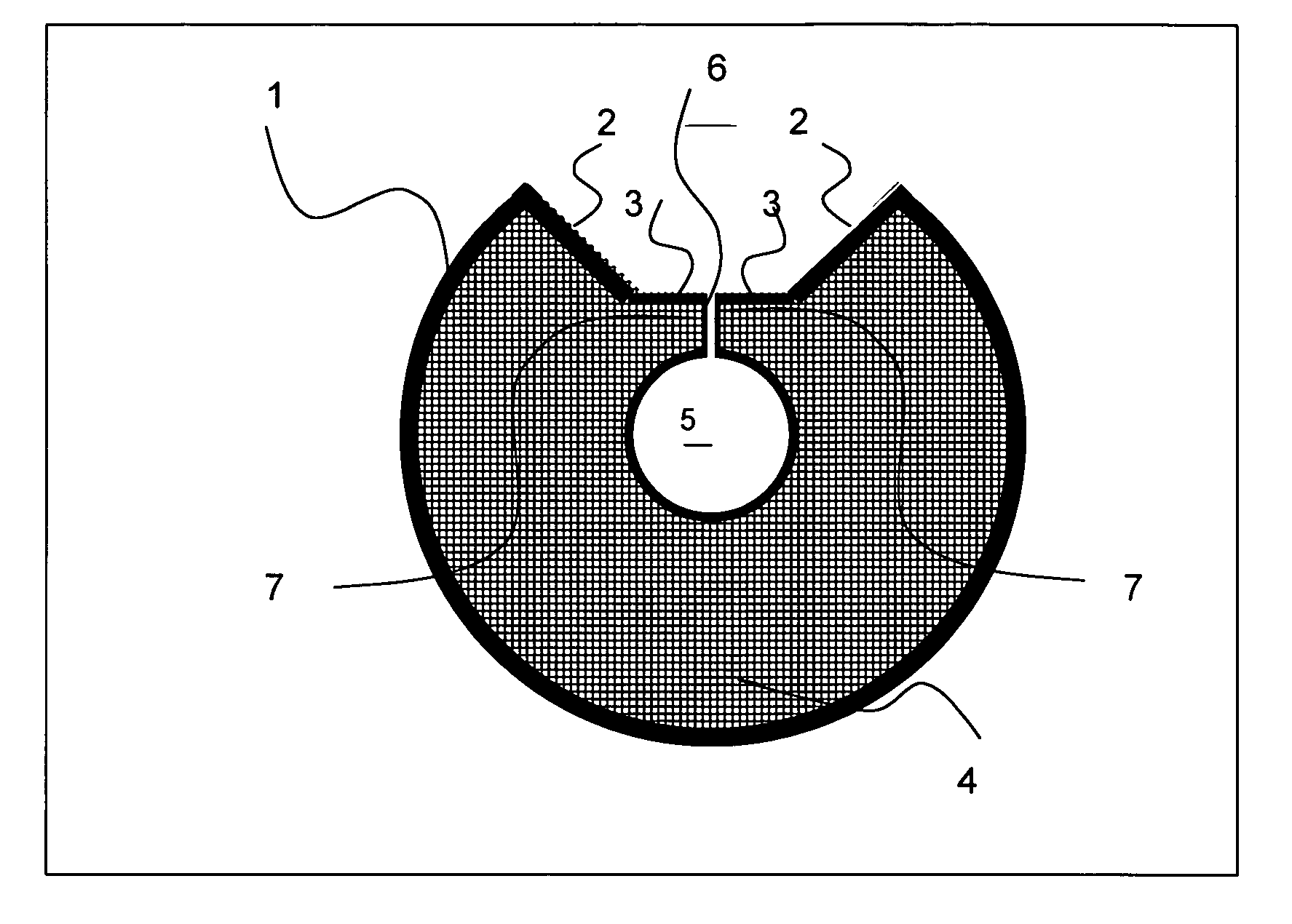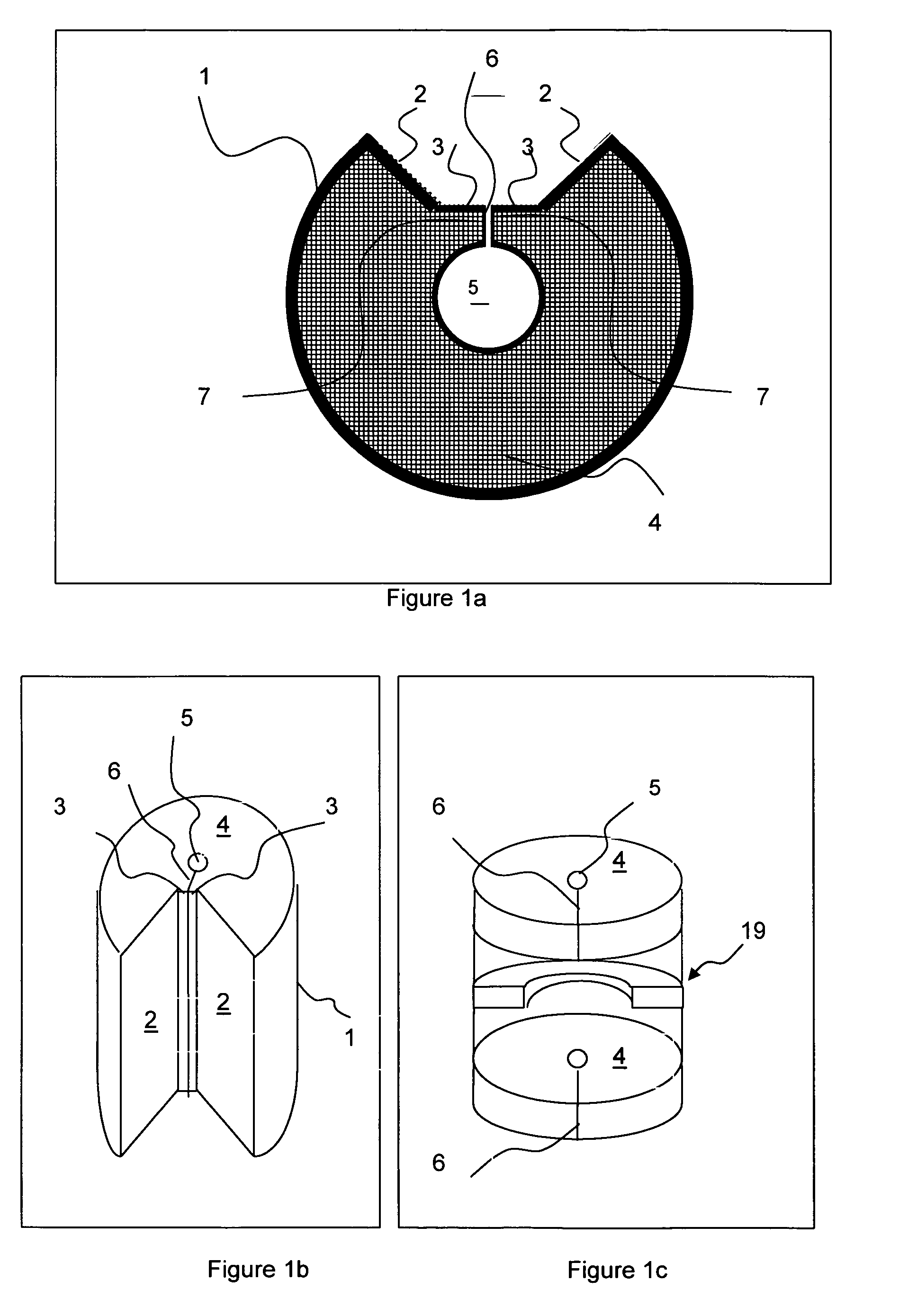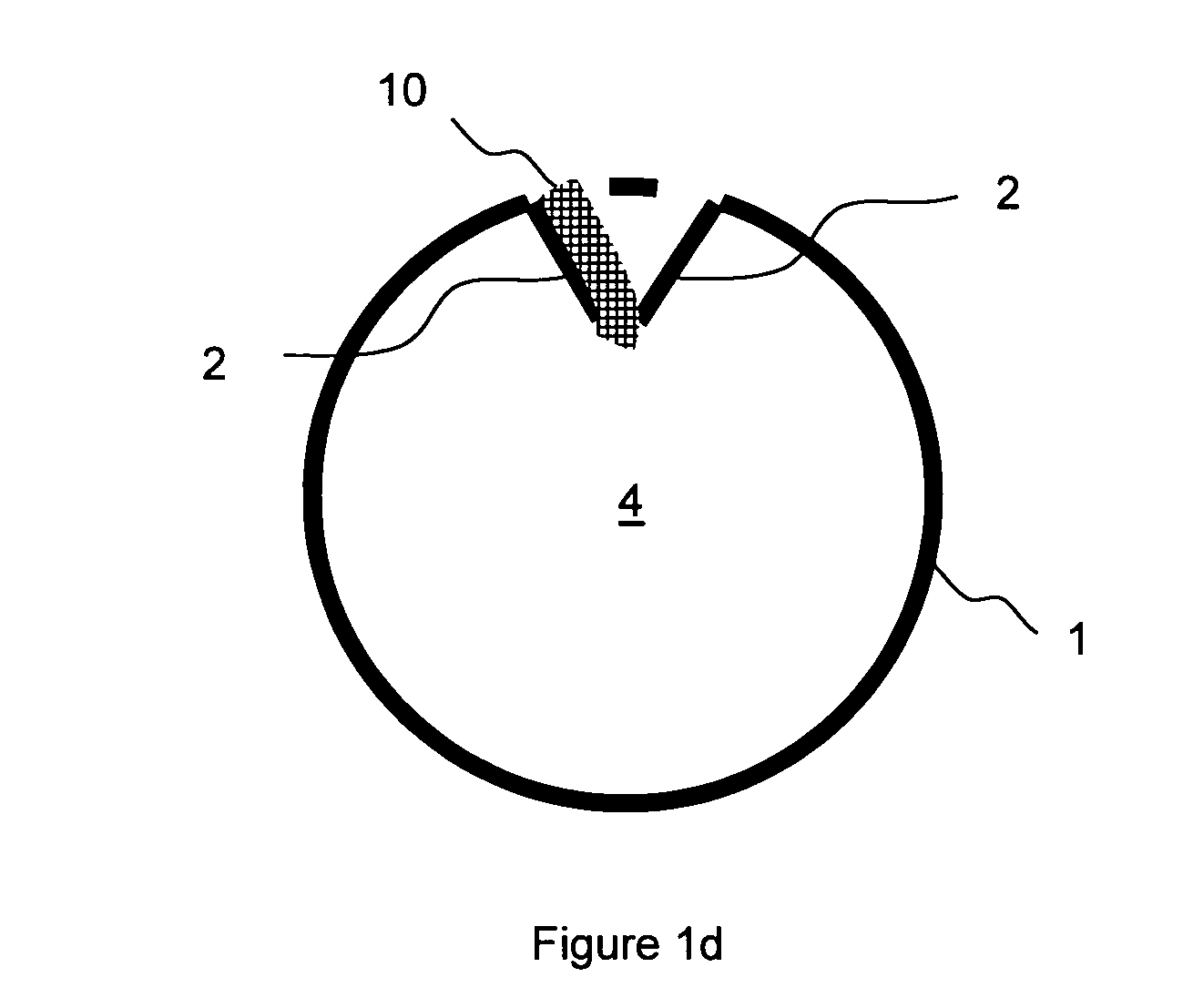Plant delivery apparatus and method
a plant and apparatus technology, applied in the field of plant delivery apparatus and method, can solve the problems of destroying plants beyond repair, interfering with growth processes, damage and destruction of growth structures,
- Summary
- Abstract
- Description
- Claims
- Application Information
AI Technical Summary
Benefits of technology
Problems solved by technology
Method used
Image
Examples
example 1
[0163] A plant delivery apparatus was made starting with a length of PVC Piping having 2 mm wall thickness. This was post-formed by heating of a region on the outside and forming into a vee structure by use of a vee shaped roller and former on the material softened by heat. This section was then cut into 23 mm long pieces and the bottom of the formed vee was slit to provide flat reentrant sections, such as illustrated as element 2 on FIG. 1d. The section so formed was then forced partially open and a strip of adhesive backed closed cell nitrile foam (10) as shown in FIG. 1d was attached so that it attached to one flat side of a flat section (2) and protruded through the slit.
[0164] The closed-cell-structure, impermeable, adhesive backed foam strip (10) is attached to at least one of the flats so that it protrudes through and thus seals the aperture under action of the clip structure closing. Pressure on the other flat reentrant section (2) can reopen the apparatus to allow entry of...
example 2
[0168] An embodiment of the invention was made as a clip from a 90 mm outside diameter 3 mm thick PVC tube section by the same means of forming and slitting the vee as described in example 1 and cutting to 75 mm lengths. The slit was sealed with conformal impermeable closed cell structure adhesive backed nitrile foam strip of total 6 mm thickness 25 mm wide and penetrating the slit adhered to the flat. The end foam plugs were made by closed cell structure nitrile foam sheet of total 25 mm thick with a slit and central 20 mm hole cut for interference fit in the PVC section and glued inside either end.
[0169] The apparatus was loaded with from one to five 25 mm square sections of 20% Dichlorvos in a plastic matrix. The square sections are mechanically retained between the two end foam sections spaced around the inside of the PVC section and held in place with impermeable foam strips forming a seal around each plastic matrix piece. The rate and duration of release of the Dichlorvos fro...
PUM
 Login to View More
Login to View More Abstract
Description
Claims
Application Information
 Login to View More
Login to View More - R&D
- Intellectual Property
- Life Sciences
- Materials
- Tech Scout
- Unparalleled Data Quality
- Higher Quality Content
- 60% Fewer Hallucinations
Browse by: Latest US Patents, China's latest patents, Technical Efficacy Thesaurus, Application Domain, Technology Topic, Popular Technical Reports.
© 2025 PatSnap. All rights reserved.Legal|Privacy policy|Modern Slavery Act Transparency Statement|Sitemap|About US| Contact US: help@patsnap.com



